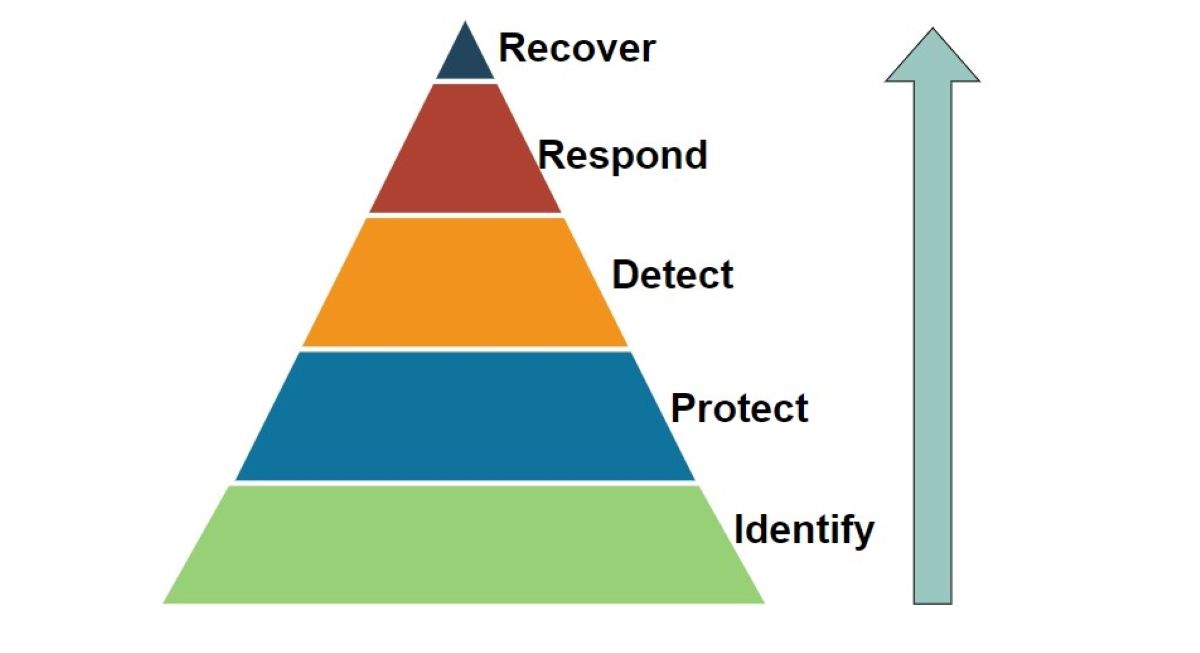A framework is a useful skeleton of a structure or method. It is the policy, procedure, theoretical knowledge, and practical applications that provide guidance for the actions to be taken and provide better and faster results.
Cybersecurity frameworks are frameworks defined by cybersecurity organizations to determine the cybersecurity strategy of an enterprise environment. Cybersecurity frameworks enhance existing security protocols and create new layers of security if they are not available. They detect unknown security vulnerabilities that occur in corporate networks and try to reduce misconfigurations. Here are five you may find throughout the industry.
1. Payment Card Industry Data Security Standards
Payment Card Industry (PCI) is a cybersecurity standard designed to increase the security of payment transactions made from credit and cash cards in banking transactions. PCI includes the logical and physical data security standards that must be complied with during the processing, transmission, and storage of transactions made from credit and cash debit cards. The payment card industry aims to standardize data security, reduce data security-related risks, create an environment of trust, and protect the cardholder. This standard generally needs to provide the following:
- Credit and cash card customer information in a secure network
- Setting system passwords and complexity
- Transmission of credit and cash card customer information over encrypted connections
- Using and updating anti-virus software on the system
- Continuous monitoring and recording of access to card information
- Physical protection of data centers with information
2. ISO 27001
ISO 27001 is a management framework by the International Organization for Standardization that defines analytics and addresses information security risks. With the implementation of ISO 27001 procedures, institutions can provide policy procedures and controls that include people, processes, and technology for resilience to cyberattacks, adapting to changing threats, reducing costs related to information security, and protecting information security costs and all data.
3. Critical Security Controls
Critical security controls contain a set of rules that must be followed for organizations to create effective cybersecurity strategies. These security controls have defined three groups of critical security controls that organizations must comply with. These are simple, basic, and organizational control sets. The common point of these three different control sets is to take precautions to protect the data and to minimize the possibility of attack. Many measures, from the protection of e-mail and web browsers to vulnerability scanning tools and even the security of network devices, are under these control sets.
The pre-determination of such boundaries and precautions and the fact that everything has certain rules is to minimize the possibility of making mistakes in an organization. Any security issue that goes unnoticed can have major consequences. So everything to check is ready in advance. You can think of them like an organization's cybersecurity precaution law.
4. National Industry Standard and Technology
There is a cybersecurity framework called NIST that private sector organizations in the United States use. This framework provides some policies on how to take action before cyberattacks happen. It is also a guide on how to detect the attack and how to respond to an attack. Not only the United States but also the governments of countries such as Japan and Israel use NIST. To fully understand this guiding policy, it is necessary to examine the five key functions it provides.
- Identify: To manage the cyber security risk, the systems, assets, data, and capabilities in the organization must be manageable with a corporate approach.
- Protect: Organizations should develop and implement appropriate recommendations to limit a potential cybersecurity incident or impact.
- Detect: Organizations should implement appropriate measures to identify cybersecurity incidents. It is necessary to detect abnormal activity and threats to operational continuity and adopt monitoring solutions.
- Respond: If a cybersecurity incident occurs, organizations need to contain the impact. This requires the organization to prepare a response plan for cybersecurity incidents, identify communication failures between appropriate parties, gather information about incidents, and analyze this information.
- Recover: Organizations must have recovery plans for services damaged by a cybersecurity incident. While preparing this rescue plan, it is necessary to consider all the experiences learned after the attack and update the plan accordingly.
5. MITRE ATT&CK Framework
MITRE ATT&CK framework is a very comprehensive cybersecurity framework used by both the red and blue teams. It has a knowledge base and classification of offensive actions. The focus is not on the tools and malware used by competitors. It examines how attacks interact with systems during an operation. The ATT&CK framework is a fairly large knowledge base for modeling offensive behavior. It is possible to associate the following concepts with this framework:
- Malicious groups carry out the attacks.
- Institutions and industries targeted by attackers or aggressive groups.
- Attack vectors and attack types used by attackers.
- The procedures that malicious attackers follow to attack.
- The methods of attack detection. For example, you can think of situations such as monitoring network anomalies or having a permission authorization in the system that should not be present.
- Measures to be taken against attacks. For example, you can consider measures such as two-step verification, firewall, use of antivirus, or code signing.
The ATT&CK cybersecurity framework is constantly being updated as it has a very large data pool. In addition, in light of all this important information it provides, it provides very important information not only about the security of servers or computer networks but also about mobile security. By looking at this information, being able to predict how a possible attack will take place would be a huge plus. If you are new to the world of cybersecurity and are at the forefront of everything, the ATT&CK framework will be a wealth of information for you.
Do These Frames Solve Everything?
No. Hundreds of new types of attacks and malware appear every day, even hourly. But if you are managing a project consisting of millions of lines of code or trying to protect the bank information of hundreds of thousands of people, you need to follow a systematic and political process. These cybersecurity frameworks are great helpers in this regard.
But these frames are just skeletons. To complete the exterior, you need more. If you are not sure where to start, learning the NIST framework and mastering the details about it would be a good step.










Gloss